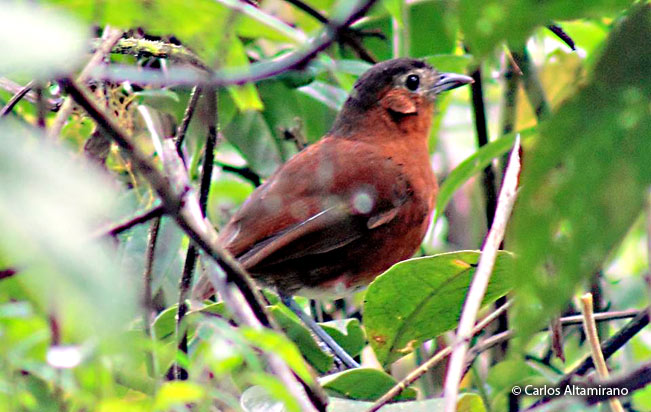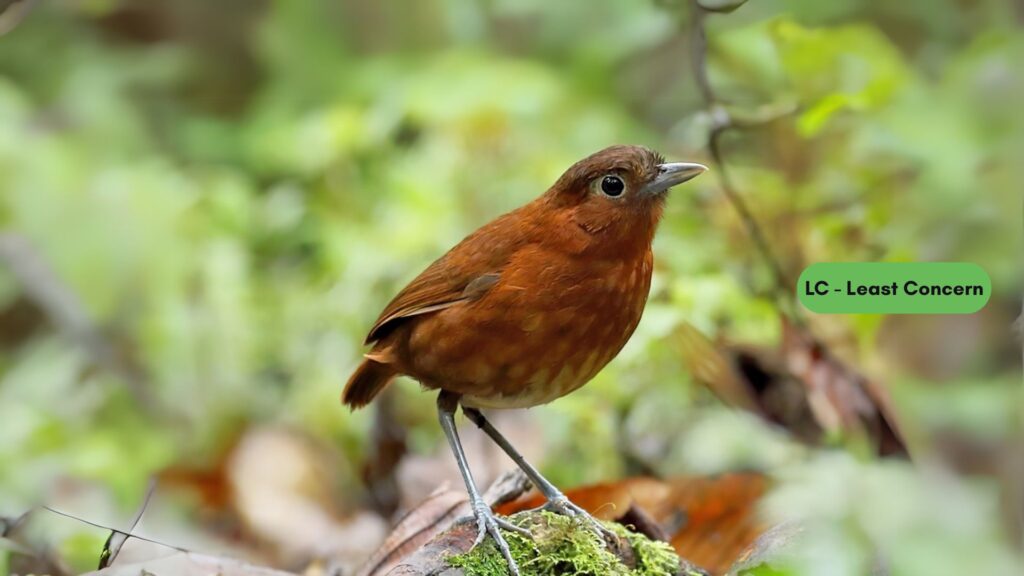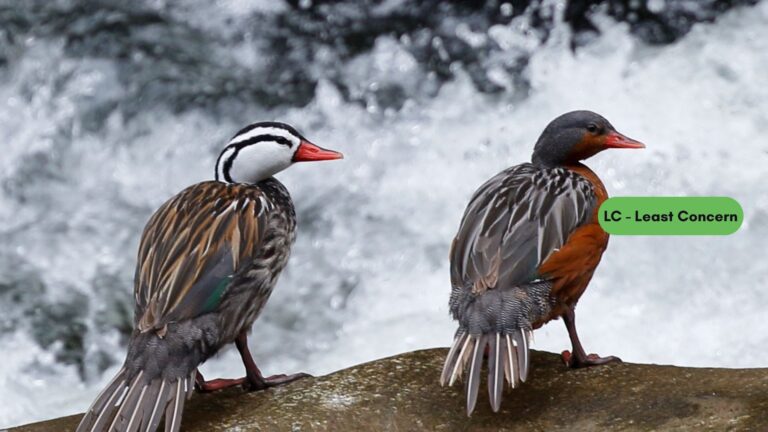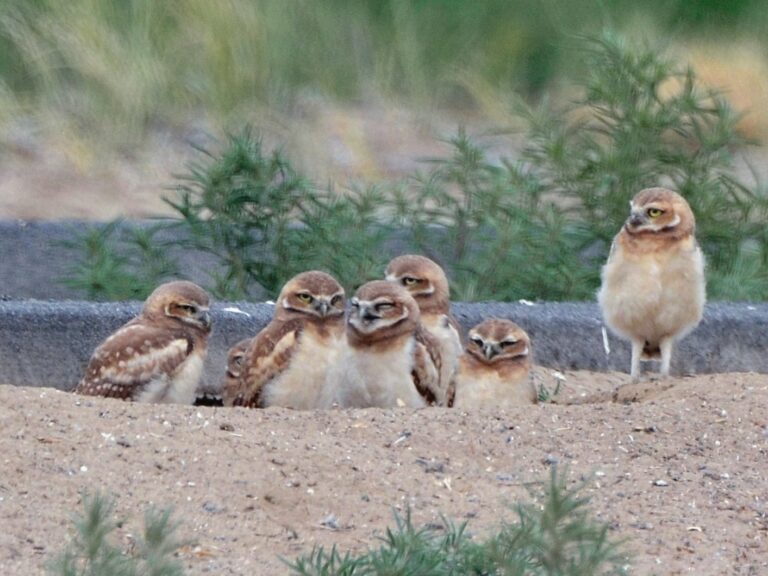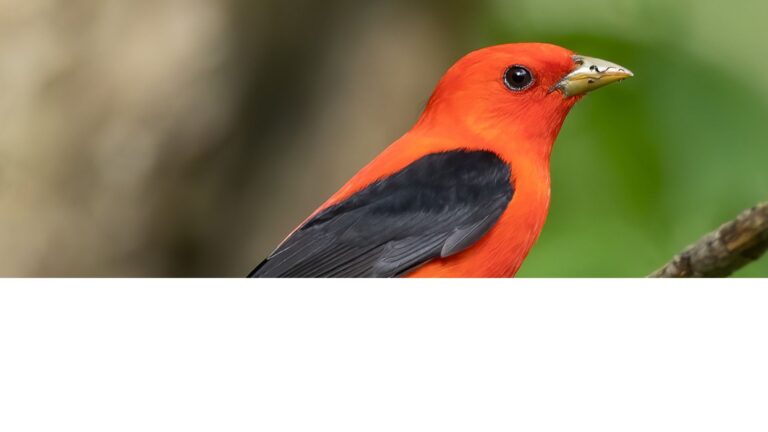Bay Antpitta: Discover the Enigmatic Bird of the Amazon Rainforest
The Bay Antpitta, or Grallaria capitalis, is one of those birds that just grabs your attention if you’re into birdwatching or field research. It’s got this elusive personality and a look that stands out in the Grallariidae family.
You’ll mostly find it tucked away in the humid forests of South America. The Bay Antpitta leans on its environment for pretty much everything—survival, nesting, the works. Its plumage is so well-matched to its surroundings, you might walk right past and never know it. As a member of the passeriformes order, it’s got some cool adaptations, especially in how it breeds and lives day-to-day.
Its diet and wild habits? Those tell you a lot about how it fits into the ecosystem. This bird’s presence means something for the health of its forest home. Dive into the Bay Antpitta’s world, and you start to see why conservation here matters. If you’re curious about its ecological role, it’s a window into the bigger picture of southern forests and why we really shouldn’t take them for granted.
Key Takeaways
- The Bay Antpitta is scientifically classified as Grallaria capitalis.
- It inhabits humid forests in South America and is known for its elusive behavior.
- Conservation efforts are vital to preserving its natural habitat and ecological role.
Sign Up for Our Monthly Newsletter
Every month we send out our newsletter about interesting (and sometimes quirky) things happening in the world of birding. Give it a try!
Taxonomy and Classification
The Bay Antpitta stands alone as a monotypic species—just Grallaria capitalis, no subspecies tagging along. That’s kind of rare, right?
Let’s break down where it fits in the bird family tree. Here’s the basic rundown:
- Kingdom: Animalia
- Phylum: Chordata
- Class: Aves
- Order: Passeriformes
- Family: Grallariidae
- Genus: Grallaria
- Species: Grallaria capitalis
This bird’s got some traits—both in how it looks and its genetics—that set it apart. You won’t confuse it with Tawny Antpitta (Grallaria quitensis) or Rufous Antpitta (Grallaricula ferrugineipectus); those are different genera altogether.
Knowing its taxonomy helps researchers figure out what it needs and how it fits into the bigger puzzle of bird conservation.
Related Antpittas and Similar Species
Within Grallariidae, the Bay Antpitta keeps some interesting company. Think Undulated Antpitta, Giant Antpitta, Jocotoco Antpitta, and Moustached Antpitta. They all have their quirks but share some body shape and behavior similarities.
Tawny Antpitta, for example, hangs out in similar places but looks and acts a bit different. The Bay Antpitta sticks to lowland forests and sometimes the páramo, while its relatives might prefer other elevations or forest types.
For birders and scientists, these differences are kind of a big deal when mapping out biodiversity.
Distribution and Habitat
Where do you find the Bay Antpitta? It’s not everywhere. Its range is pretty specific, and the habitats it picks are crucial for its day-to-day life. If you’re worried about habitat loss, you’re not alone—this is a real issue for the species.
Geographic Range
Mostly, you’ll spot the Bay Antpitta (Grallaria hypoleuca) along the Andean slopes of Ecuador, Peru, and Colombia. Its home stretches from the northern Andes down into moist montane regions.
It seems to like living between 1,200 and 2,000 meters up. You’ll find it in the eastern Andes of Colombia, plus a few forests in southern Ecuador and northern Peru. Its range is pretty patchy, which isn’t great—it can make it tough for different groups to mix and keep their gene pool healthy.
Preferred Habitats
Bay Antpittas love montane forests with thick undergrowth and lots of tree variety. They like it humid, with plenty of leaf litter and tangled vegetation to hide in.
This cover protects them from predators and gives them access to insects and fruit. They’re also at home in subtropical forests that stay moist year-round. These spots are their go-to for breeding and eating. If we want them to stick around, we really need to keep these habitats intact.
Impact of Habitat Loss
Let’s be real—habitat loss is a huge problem for the Bay Antpitta. Deforestation for farming or cities has chopped up their homes, leaving them with fewer places to live. This isolation puts them at risk and makes extinction more likely. If we want to give them a fighting chance, we’ve got to protect what’s left and use land more wisely.
Physical Description and Identification
The Bay Antpitta (Grallaria capitalis) has a look that’s both subtle and memorable. If you’re out birding, a few features make them easier to spot—if you’re lucky enough to see one.
Field Marks and Coloration
Its upper parts? Rich brown, which is perfect for blending in on the forest floor. The head stands out with a soft grey, and the wings go darker brown. Underneath, it’s lighter—think cream or buff. This contrast actually helps you tell it apart from similar birds.
Look for a touch of rufous on the throat. It’s not dramatic, but it’s there if you catch the light just right. Most of the time, you’ll see the Bay Antpitta foraging on the forest floor. Its coloring helps it stay hidden, so you’ve got to be quick with your binoculars.
Size and Biometrics
It’s a medium-sized bird—usually 22 to 25 centimeters long. Weight sits around 80 to 100 grams, though some are a bit chunkier. The wingspan is about 36 to 38 centimeters. It doesn’t fly far, just enough to get from bush to bush.
The bill is sturdy and a good length for grabbing bugs. These details matter if you’re keeping field notes or comparing with similar species. Want more info on antpittas? This resource is a solid place to start.
Ecology and Behaviour in the Wild
The Bay Antpitta’s way of life in the wild is pretty fascinating. It’s all about how it eats, interacts, and survives out there.
Diet and Feeding Habits
It mostly eats terrestrial invertebrates—earthworms, insects, and whatever else it can dig up. The leaf litter in their forest home is like a buffet. They scratch around with strong legs, flipping leaves to find food. Earthworms are a favorite, but they’ll grab other bugs too.
Sometimes, when fruit is around, they’ll snack on that for a change. A little variety never hurts, right?
Territoriality and Social Structure
Bay Antpittas don’t really play well with others—at least not outside breeding season. Males get especially territorial and aren’t shy about showing it. They defend their patch with displays and calls, making sure no one else muscles in. Usually, you’ll see them alone or in pairs if it’s breeding time.
Calls and Songs
Communication is a big deal for them. Their calls are surprisingly varied—some warn of danger, others are all about attracting a mate.
If you’re keen on bird calls, xeno-canto has a bunch of recordings. Their songs can travel far, which helps them claim territory and keep in touch with partners. It’s actually pretty impressive how much you can learn about them just by listening.
Breeding, Reproduction, and Life Cycle
The Bay Antpitta’s breeding habits are worth a closer look. There’s a lot going on, especially during nesting season.
Nesting and Breeding Season
They usually breed in the warmer months, when food is easy to find. Dense forest is their top pick for nest sites, and they keep the nest low, tucked under thick cover. Nests are a mix of leaves, twigs, and whatever else they can gather. The female lays two to four eggs, not a huge clutch.
She incubates the eggs for about 14 to 16 days. Once the chicks hatch, both parents chip in to feed them, making sure they get a good start. If you want to dig deeper into nesting behavior, this study is definitely worth a look.
Conservation Status and Research
The Bay Antpitta’s conservation status really matters for its future. It also shapes how researchers approach their work. People keep digging into its classification and the latest studies, hoping to get a grip on what’s actually happening with this bird.
IUCN Conservation Status
Right now, the IUCN Red List puts the Bay Antpitta at near threatened. That means it’s not in the clear—there’s a real risk it could become endangered if things don’t improve.
The biggest problems? Habitat keeps shrinking thanks to deforestation and more land being turned into farms. It’s not facing extinction yet, but let’s be honest, it’s not exactly thriving either. Protecting the forests it calls home is pretty much essential if we want to keep seeing this bird around.
Ongoing Studies and Resources
Researchers spend a lot of time watching how the Bay Antpitta lives in the wild. They’re especially interested in its odd nesting habits and how it interacts with other birds, like the sword-billed hummingbird.
Field surveys in places like Peru, especially near the Apurímac River Valley, help map out where it actually lives. If you’re ever curious, the AviBase database is packed with info and keeps tabs on new research.
Frequently Asked Questions
The Bay Antpitta comes from South America and has a handful of quirks that birders and researchers love to talk about. Here are some quick answers about where it lives, what it eats, how it looks, and a few other things people usually ask.
What habitat does the Bay Antpitta typically reside in?
You’ll usually find the Bay Antpitta in tropical and subtropical forests. It likes thick understory vegetation—that’s where it can hide and hunt for food. It sticks to moist, shady spots, so don’t expect to see it out in the open much.
What is the diet of the Bay Antpitta?
Insects and small invertebrates make up most of its menu. Sometimes it’ll go for small fruits or seeds, especially if bugs are harder to find. The bird forages on the ground, using its sturdy bill to dig around for snacks.
Can you describe the physical characteristics of the Bay Antpitta?
This bird’s got a chunky build and usually measures about 20 centimeters long. Its plumage is mostly brown, but the bay-colored belly stands out, along with some dark streaks on the sides. Honestly, the coloring does a great job of helping it disappear into the forest background.
How does the Bay Antpitta behave in the wild?
Shy is probably the best word for it. The Bay Antpitta tends to stay tucked away in dense foliage, not making a big fuss. Its call is pretty distinctive, though—you might hear it any time of day or night. These birds mostly keep to themselves, but during breeding season, you might spot them in pairs.
Is the Bay Antpitta considered an endangered species?
It’s not endangered right now, but it’s not out of the woods either. Deforestation and expanding agriculture keep chipping away at its habitat. People definitely need to keep an eye on it if we want to make sure it sticks around for the long haul.
What are the known breeding habits of the Bay Antpitta?
Breeding usually happens in the rainy season. The Bay Antpitta builds its nest low, tucking it away among leaves and roots. The female generally lays two eggs. She sits on them to incubate, while the male sometimes helps keep the area safe.


